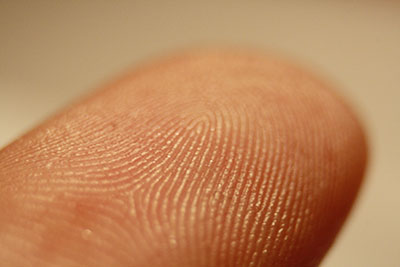Touch is one of the arguments that Microsoft is using for their UI redesign in Windows 8. It is touch centric, they know it the consumer knows it and the hardware makers know it too. The problem with touch as a primary method of input is and always will be accuracy. Remember we are talking about touch screens here, not touch pads. A touch pad is able to have a much greater accuracy than a touch screen for some very basic reasons. This is where most analysts and consumers get confused these are two very different technologies and they are made by different companies. The experience you get with a Synaptics Touch Pad will not be the same as an Elan Touch Pad. Anyone that has the two will know exactly what I am talking about here, in almost all cases the Synaptics will perform significantly better than the Elan model, but I am getting way off topic. Suffice it to say that touch one a touch enabled screen will not be the same between different manufacturers or different products.
Getting back to my earlier statement that “touch” is no accurate; let me give you an example of what I mean. Right now the best touch pads have an accuracy of 1mm the best touch screens have an accuracy of 7mm. Right off the bat we can see that a touch screen is 7-times less accurate than a touch pad. But there is more to it. When you use a touch pad your eyes are on the object you want to manipulate on the screen while your finger is on the pad. When you use a touch screen your finger is on the screen often blocking the item you want to manipulate. Now consider that the average finger is about 10mm across. You are now blocking the area you want to work on with your finger, which is larger than the sensor in tour touch screen.
To Microsoft’s credit they did factor this in when they designed the Metro/ModernUI. That is the reason for the tiles, they can be implemented on lower cost and less accurate screens to save money. The problem is that as the accuracy gets lower so does the user experience and also productivity, but increasing the accuracy of a touch screen is pointless and counterproductive.
The failings of the touch screen are why Microsoft wants to push the idea of a hybrid. You get a tablet, but you also get a keyboard and a touchpad. Sounds like a great idea right? Unfortunately it is not really such a great idea. You see if given the option, people will almost always slip back to what they know. All of the people that I have seen use a Surface (RT or Pro) complain about the touch interface when doing any real work (Email, Excel, Power Point, content creation). When you give them a keyboard cover (and possibly a mouse) they are happy and start getting work done again. The problem is that the keyboard and mouse turn into their primary input methods with the touch screen rarely used or forgotten. This is even more pronounced when you put a touch screen on a laptop that has a fixed keyboard and touchpad. While you might pull your “tablet” out of its dock and use the touch screen to browse the internet or watch a movie you are not going use the touch screen when you have a keyboard and touchpad attached.
We are pretty sure that Microsoft knew this going into Windows 8, but as we have mentioned before the future success of Windows RT and to a lesser degree Windows 8 depends on presenting touch as the future of computing. They have tied the fate of the Modern UI in with the fate of touch which was a bad move on their part. Windows needs to be hardware and input agnostic. It needs to be an OS that is not tied to specific hardware or input methods. This flexibility is what made Windows a popular OS you did not NEED any particular hardware to appreciate the operating system. If you wanted to do specific tasks you bought the hardware you wanted to accomplish them. Now by linking Window with touch they have given up that flexibility and tied themselves to an input method that is seen as intermediary/secondary at best. This is an input method that most agree will not last for more than 5-6 years and be replaced. It is also an input method that is good for less than half of the computing usage model out there a model that the “PC” is not associated with in the first place.
Touch has a place in the market, but it is very foolish of Microsoft and analysts to predict that it is the future of the PC simply because they want it to be. All these claims have done is create more confusion in the market and have a potential impact on PC sales. Microsoft now needs to find a way out of the hole they have dug over touch and the modernUI. I hope are able to do this and do it soon or there will be a big shift in the PC market to someone that can. Maybe this is the big break that Linux has been waiting for.
Tell us your thoughts on the future of touch in our Forum

